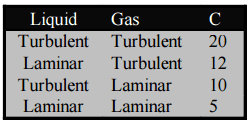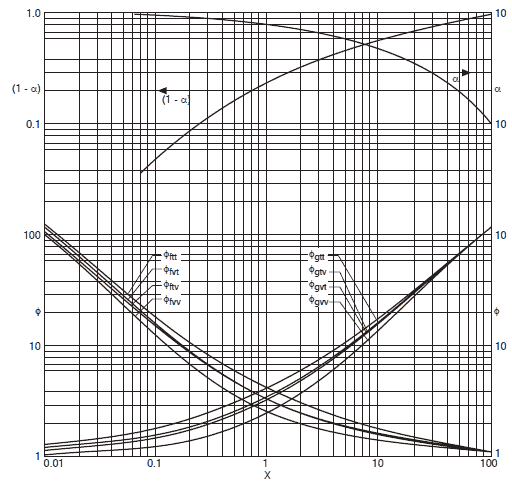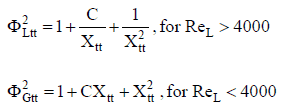An alternate approach to calculating two-phase pressure drop is the separated-phases model.
In this model, the phases are considered to be flowing separately in the channel, each occupying a given fraction of the channel cross-section and each with a given velocity. It is obvious the predicting the void fraction is very important for these methods. Numerous methods are available for predicting the void fraction.
The method of Lockhart and Martinelli is the original method that predicted the two-phase frictional pressure drop based on a friction multiplicator for the liquid-phase or the vapor-phase:
∆pfrict = Φltt2 . ∆pl (liquid-phase ∆p)
∆pfrict = Φgtt2 . ∆pg (vapor-phase ∆p)
The single-phase friction factors of the liquid fl and the vapor fg are based on the single-phase flowing alone in the channel, in either viscous laminar (v) or turbulent (t) regimes.
∆pl can be calculated classically but with an application of (1-x)2 in the expression and ∆pg with an application of vapor quality x2, respectively.
The two-phase multipliers Φltt2 and Φgtt2 are equal to:
where Xtt is the Martinelli’s parameter defined as:
 and the value of C in these equations depends on the flow regimes of the liquid and vapor. These values are in the following table.
and the value of C in these equations depends on the flow regimes of the liquid and vapor. These values are in the following table.
The Lockhart-Martinelli correlation has been found to be adequate for two-phase flows at low and moderate pressures. Martinelli and Nelson’s (1948) and Thom (1964) revised models are recommended for applications at higher pressures.


